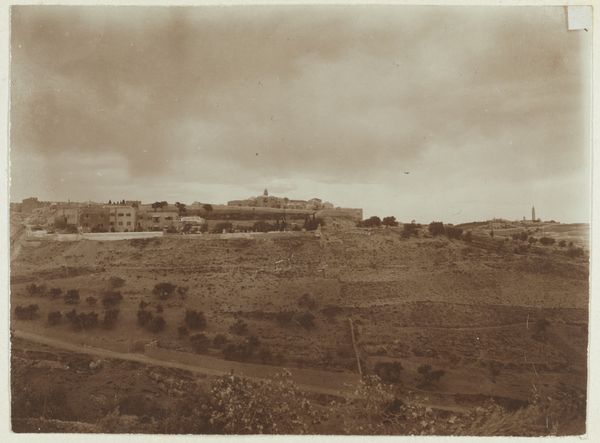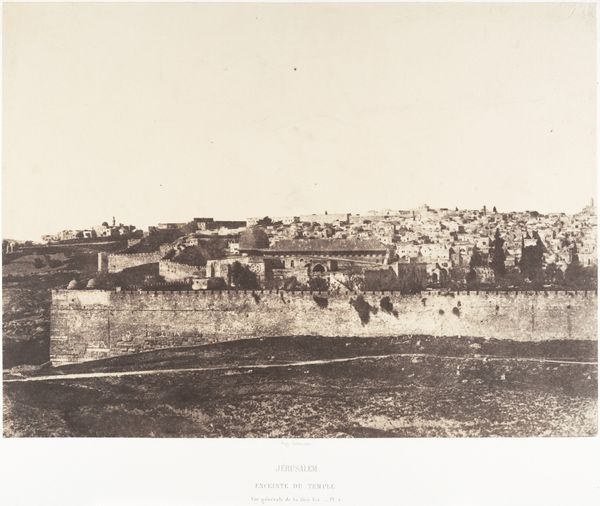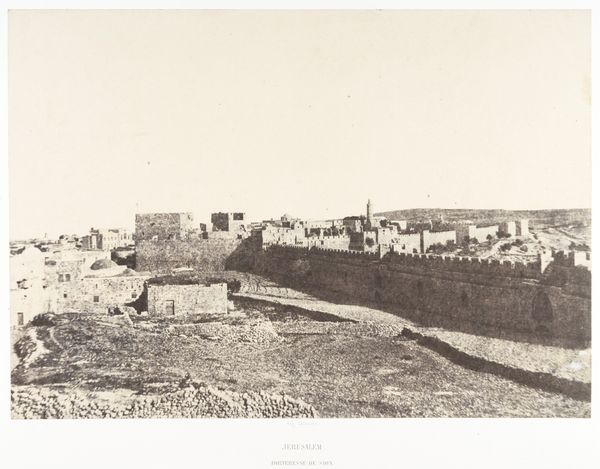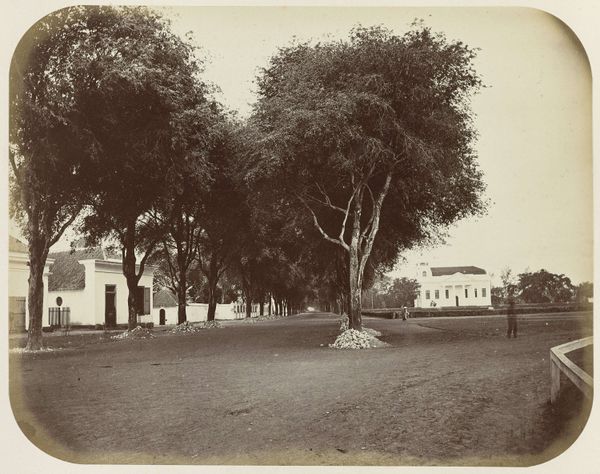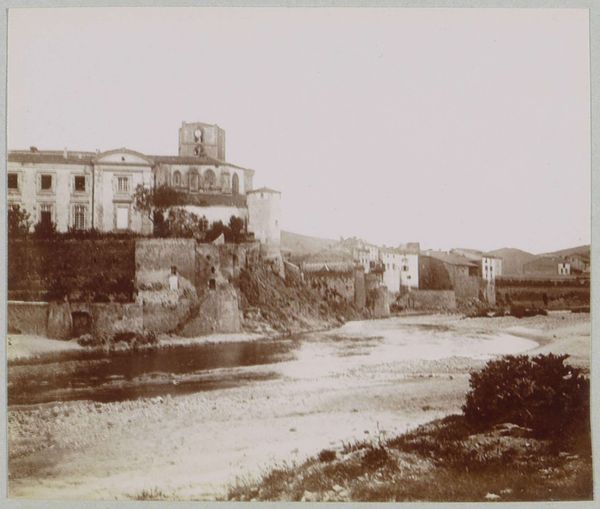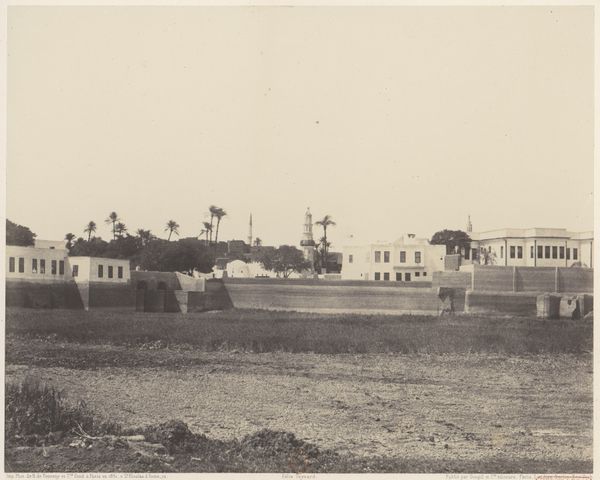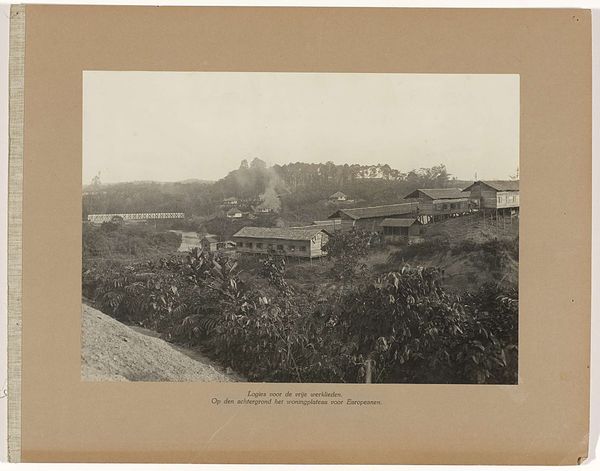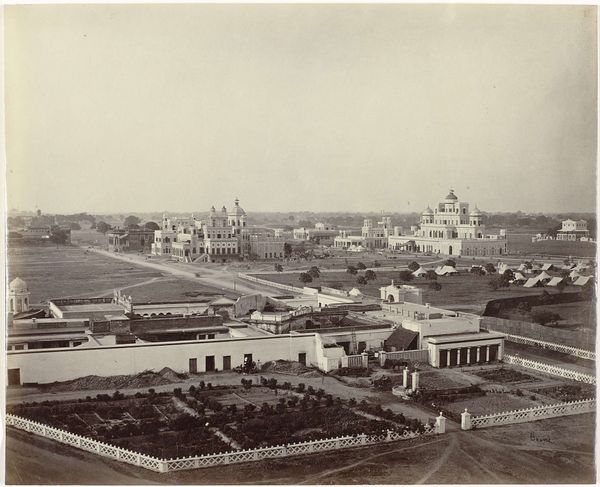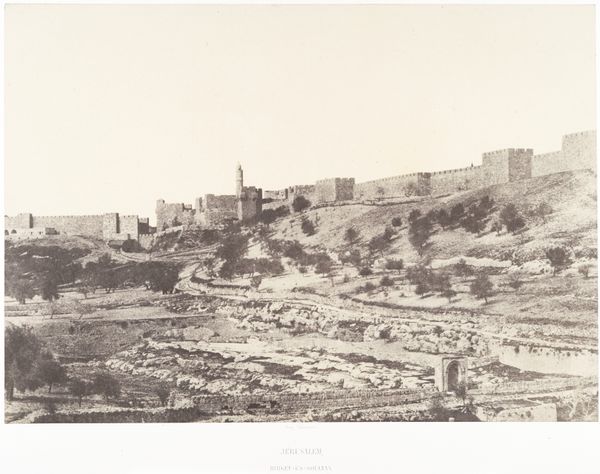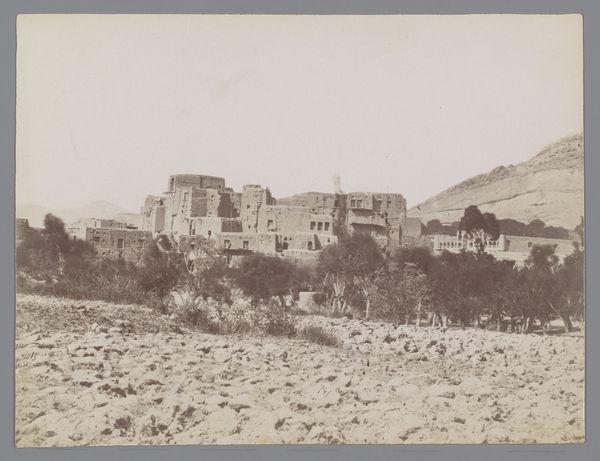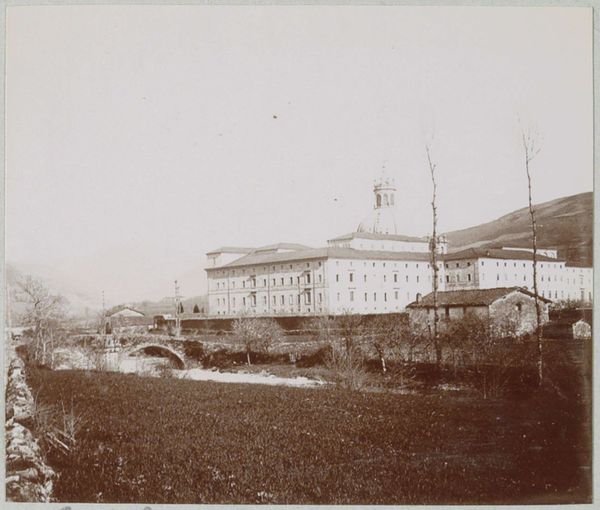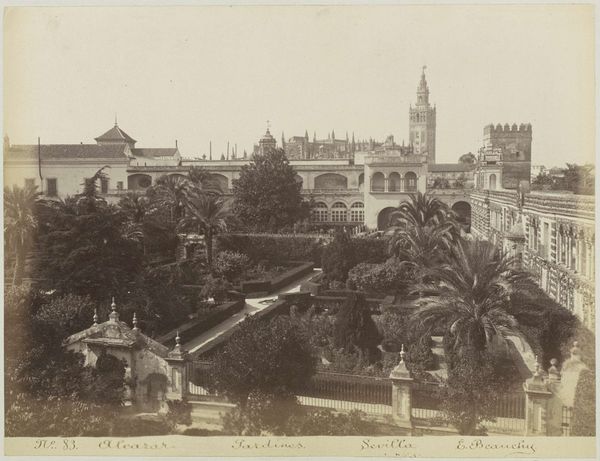
photography, albumen-print
#
landscape
#
photography
#
orientalism
#
cityscape
#
islamic-art
#
albumen-print
Dimensions: height 161 mm, width 219 mm
Copyright: Rijks Museum: Open Domain
Editor: This albumen print, “Gezicht op een ommuurde stad met poort, mogelijk Tétouan,” made sometime between 1880 and 1910 by Antonio Cavilla, has an intriguing sense of depth. The vegetation in the foreground almost obscures the city walls, drawing my eye toward that central archway. What symbols or cultural memories are embedded in this seemingly simple landscape? Curator: This photograph, an example of Orientalism, reveals as much about the photographer's perspective as it does about the place itself. Note how the archway you mentioned, with its subtle Islamic design, punctuates the imposing wall. Consider that walls and gateways are potent symbols across cultures. What do they signify here, do you think? Editor: Hmmm…Protection, obviously, maybe even separation, both physically and culturally? The framing does seem to emphasize a divide. Curator: Precisely. The very act of photographing this walled city frames it for a Western audience, perhaps reinforcing notions of the "other." Also, observe the minaret in the background, subtly hinting at the city's identity and spirituality. This evokes a connection between earth and sky and may also have acted as a marker for trade routes across the desert and into Europe. These photographic expeditions become a way of claiming visual possession, translating lived experience through a specific cultural lens. It really makes one consider photography's role in constructing perceptions. Editor: I never considered it from that angle. So, by photographing these specific elements—the wall, the arch, the minaret—Cavilla wasn't just capturing a scene, but constructing a narrative about Tetouan, potentially influenced by prevalent Orientalist views of the time. I appreciate your pointing out the symbolic weight carried in these structures, like the wall acting as a metaphor itself! Curator: Exactly! It demonstrates how visual language, consciously or unconsciously, transmits and perpetuates cultural memory.
Comments
No comments
Be the first to comment and join the conversation on the ultimate creative platform.
